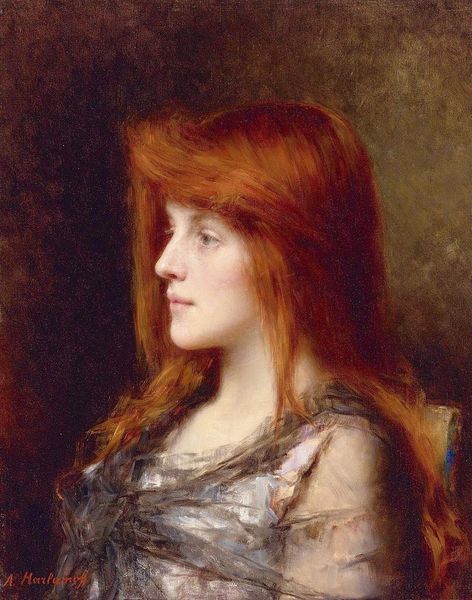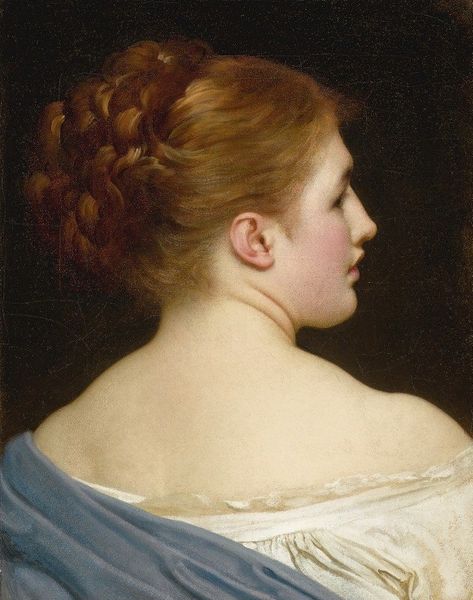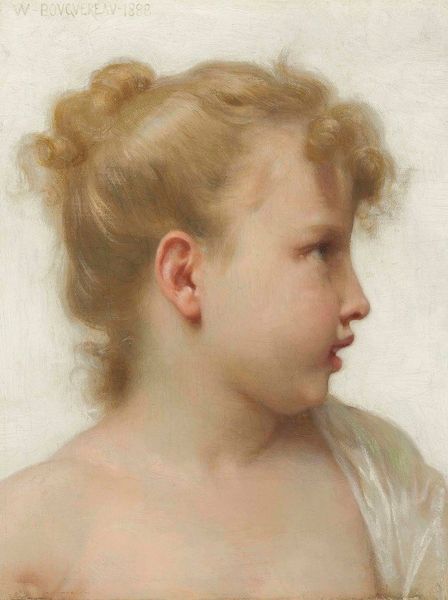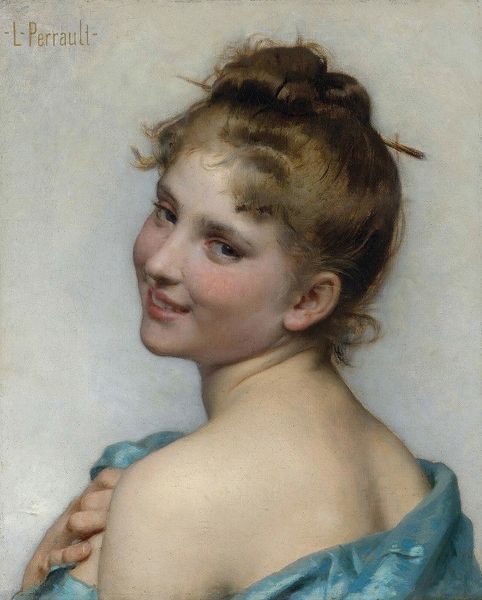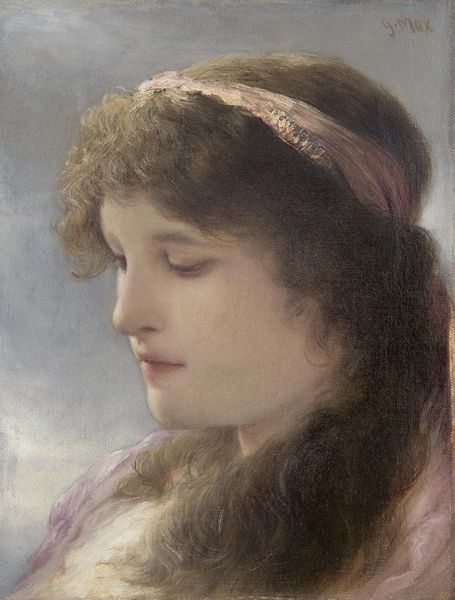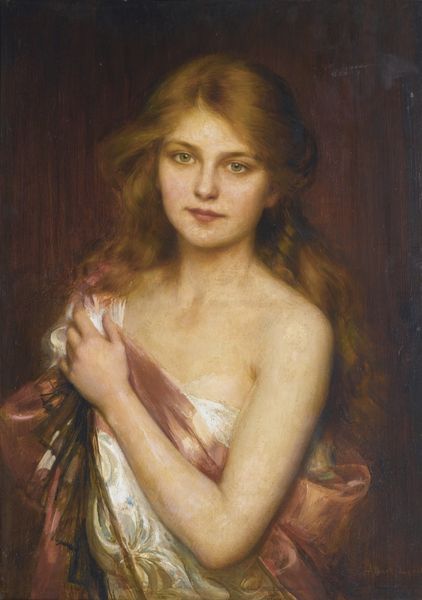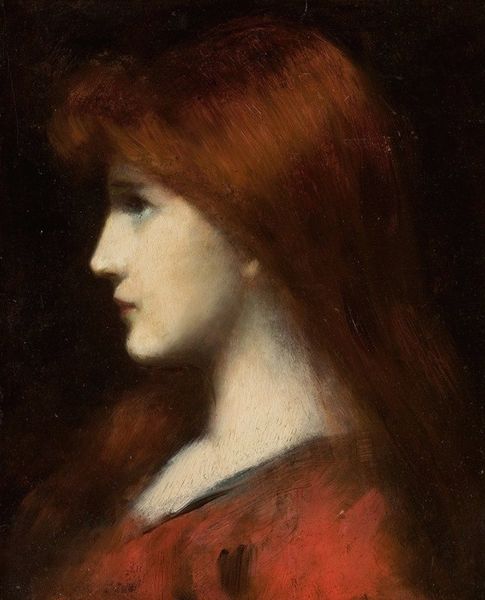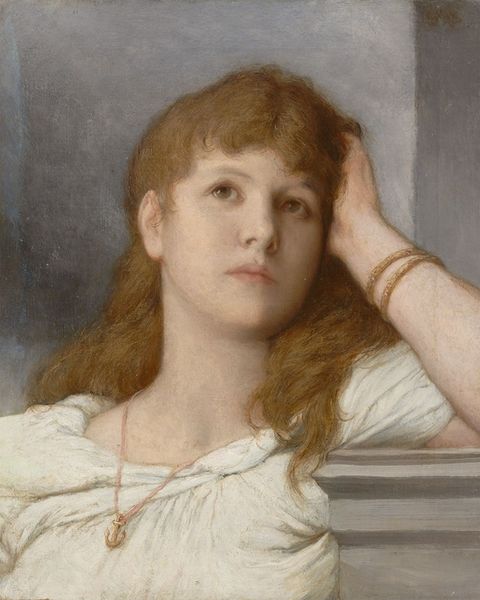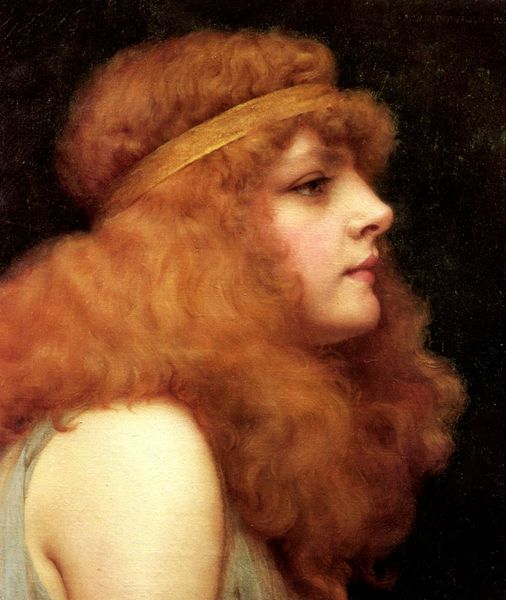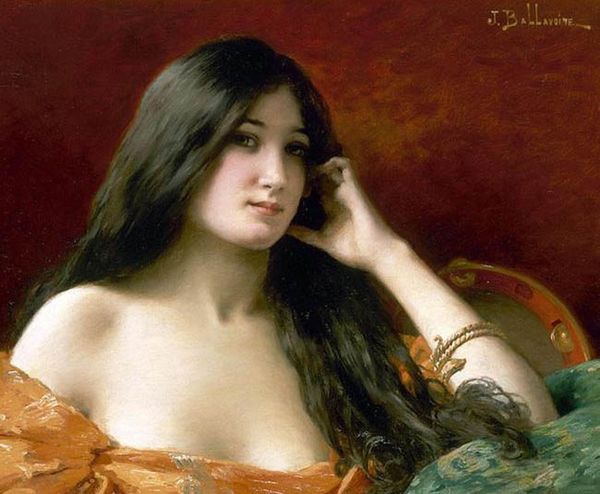
painting, oil-paint
#
painting
#
oil-paint
#
academic-art
#
nude
#
realism
Copyright: Jules-Frédéric Ballavoine,Fair Use
Editor: Here we have an “Untitled” oil painting, presumably of a young woman, by Jules-Frédéric Ballavoine. She looks off to the side, a melancholy or pensive expression on her face. What catches my eye most is the incredibly soft, almost dreamlike quality of the light. How do you interpret this work? Curator: The averted gaze, a classic pose – this echoes centuries of symbolic representation. Think of depictions of Psyche, or even early Christian Madonnas. The averted gaze often symbolizes purity, humility, introspection. What kind of continuity of visual languages do you observe across history, particularly between myth and art? Editor: It's true, she does seem idealized. The association with those figures makes sense, though it feels subtle here. It also makes me consider how much our modern perception might be different, just by losing those specific iconographic references. Curator: Precisely. Visual languages evolve, meanings shift. Yet, the subconscious recognition remains. Notice the hair – its flowing abundance was frequently associated with feminine virtue and vitality. What happens when those long-held connotations meet a modern audience largely unaware of those symbols? Editor: That’s a great point; that contextual richness certainly adds another layer to what I first thought was simply a pretty portrait. So, is the key to unlocking a painting like this in understanding the long history of its symbols? Curator: Not necessarily the *only* key, but certainly a valuable tool. Think of symbols as threads woven through time, connecting us to shared cultural memories. Consider also the role of the artist in both perpetuating and potentially subverting those symbols. Editor: That’s a fascinating perspective. It moves beyond just seeing pretty images to understanding their historical weight. Thanks for opening my eyes to that.
Comments
No comments
Be the first to comment and join the conversation on the ultimate creative platform.
